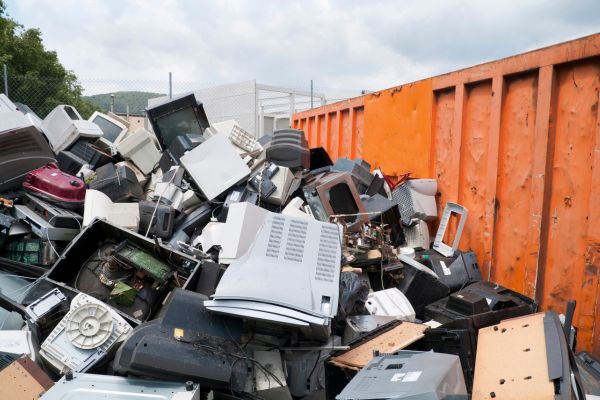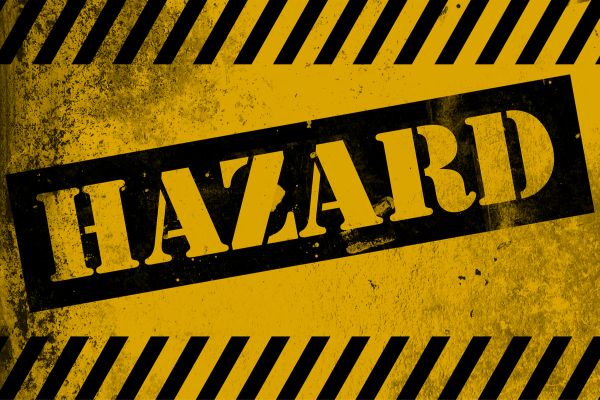As our world continues to grow and develop, so too does our waste. While some of that waste is easily disposed of or recycled, hazardous waste poses a serious threat to the environment and human health. As a result, understanding what hazardous waste is and how to dispose of it properly is essential for protecting our planet and ourselves. From household cleaners to industrial chemicals, hazardous waste can come in many forms, so it’s important to know how to dispose of them safely and properly. In this blog piece, we’ll explore everything you need to know about hazardous waste, as well as some of the best practices for waste disposal and management.
Types of hazardous waste
Hazardous waste can come in a wide variety of forms, each with distinct properties and risks. Some of the most common types of hazardous waste include:
Chemical waste
Chemical waste is any waste containing synthetic chemicals that are hazardous to human health or the environment. This can include anything from paints, solvents, and adhesives to pesticides and cleaning products.
Medical waste
Medical waste is typically produced by hospitals or patients and contains potentially infectious materials, from used syringes and bandages to blood and bodily fluids.
Electronic waste
Electronic waste, or WEEE waste, includes anything from old computers and cell phones to discarded televisions and refrigerators. This type of waste is particularly hazardous to the environment. You can learn more about electronic waste or WEEE here.

Human waste
Human waste is another type of hazardous waste that can pose a serious risk to human health. This is why hiring portable toilets and managing waste disposal is crucial at outdoor festivals and events, as well as building and construction sites.
Sources of hazardous waste
Hazardous waste can come from many different sources, including households, hospitals, factories, and building sites. At home, this can include anything from cleaning products and pesticides to old electronics and batteries. On construction sites, hazardous waste can be generated from construction debris and demolition waste, such as contaminated soil, paint, adhesives, asbestos, and so on. Manufacturing plants or factories are also common sources of hazardous waste that can include anything from synthetic preservatives, mercury-containing products, industrial solvents and paints, pesticides and herbicides, etc.
Environmental impact of hazardous waste
While hazardous waste is known to have a wide range of negative effects on human health, it can also significantly impact the local environment, leading to degradation and ecosystem damage. It can contaminate soil, making it unsuitable for growing crops. Hazardous waste can contaminate our freshwater sources, posing a health risk. It can also release toxic gases and particles into the air, which can lead to respiratory problems. More importantly, it has the potential to disrupt food chains by killing plants and animals, and impacting the functioning of different ecosystems that are vital for the planet.

Best practices for hazardous waste disposal
Proper disposal of hazardous waste is, therefore, essential for protecting human health and the environment. Some of the best practices for proper hazardous waste disposal include:
Reduce, reuse, and recycle
One of the most effective ways to deal with hazardous waste is to reduce the amount of waste generated in the first place. This can be done by using eco-friendly materials, reusing, and recycling whenever and wherever possible, especially at construction sites and manufacturing facilities.
Use certified hazardous waste disposal facilities
In some cases, hazardous waste, such as toxic and flammable materials, cannot be reduced, reused, or recycled. These wastes should be disposed of at a certified hazardous waste disposal facility, which is designed to handle hazardous waste safely and prevent environmental contamination.
Follow local rules and regulations
Local councils may have different regulations for businesses and households when it comes to disposing of hazardous waste. It’s important to be aware of and follow these regulations in order to dispose of hazardous waste safely and legally.
Educate employees and the public
One of the most effective ways to promote safe and responsible waste management practices is to educate employees and the general public about the dangers of hazardous waste and the importance of proper disposal and waste management. This can help reduce the amount of hazardous waste generated and prevent environmental contamination on a local and international scale. Besides, education and awareness can also help promote environmentally-friendly policies and innovation, leading to new technologies and practices in hazardous waste management.
In conclusion
Hazardous waste often poses a serious threat to our health and the environment. Therefore, it is important to understand what hazardous waste is and how to responsibly dispose of it. This can be anything from reducing and recycling materials, choosing eco-friendly products to promoting education and awareness about its impact on the planet. By taking simple and effective steps such as these, we can improve our health while protecting the environment.














